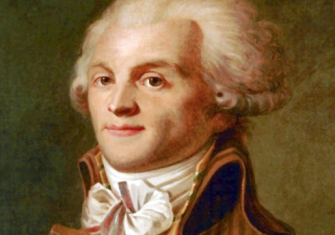The French Revolution's Angel of Death
Young, idealistic and prone to violence, Louis-Antoine de Saint-Just embodied the spirit of the French Revolution. He was devoured by the Terror he helped unleash.
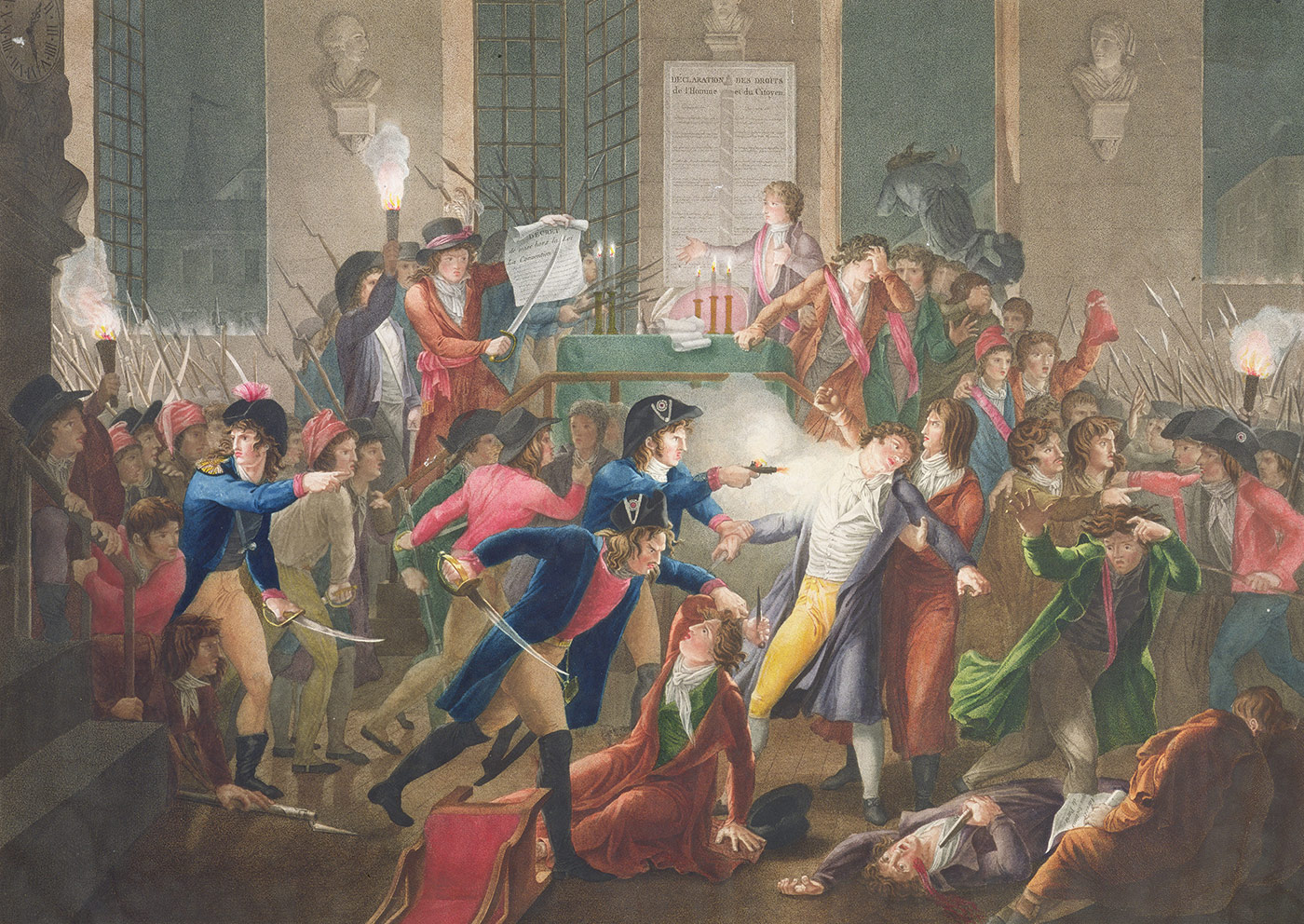
The arrest of Robespierre on the night of 9-10 Thermidor, Year Two by Jean-Joseph Tessaert. (Musée Carnavalet / Bridgeman Images)
Among the leaders of the French Revolution none has a more mythical status than Louis-Antoine de Saint-Just. His brief political career encompassed the most radical moment of the 18th century: the Jacobin Republic of the Year Two (1793-4). The Jacobins tried to forge a better world, one in which democracy, liberty and equality would become a reality, but to achieve it they used state-sponsored coercion and violence, in what became known as the Terror. The experiment ended when Saint-Just, along with Robespierre, succumbed to the guillotine in the bloodbath of Thermidor (July 1794). For many people, Saint-Just, even more than Robespierre, embodies the revolution itself: young, full of feverish energy, courage and idealism, but, like the revolutionary Terror, capable of sacrificing human lives, including his own, to make the ideal a reality. When Victor Hugo in his 1862 novel, Les Misérables, described the young student Enjolras, who leads the climatic fight on the barricade, as having ‘too much of Saint-Just’ about him, his readers knew what that meant. A few years earlier, Hugo’s contemporary and fellow countryman, the great republican historian Jules Michelet, described Saint-Just as ‘the archangel of death’, a phrase that encapsulated the legend of the unnaturally beautiful and cold-bloodedly terrible Saint-Just.
People take extreme views about Saint-Just. He is still a controversial figure, even among Anglo-American historians who are usually more dispassionate about the French Revolution than the French themselves. One biographer, the American Eugene Curtis, saw in Saint-Just a French incarnation of the romantic and radical poet Shelley. The English historian Norman Hampson took a more jaundiced view and, perhaps with Michelet’s metaphor of the fallen angel in mind, likened Saint-Just to Lucifer.
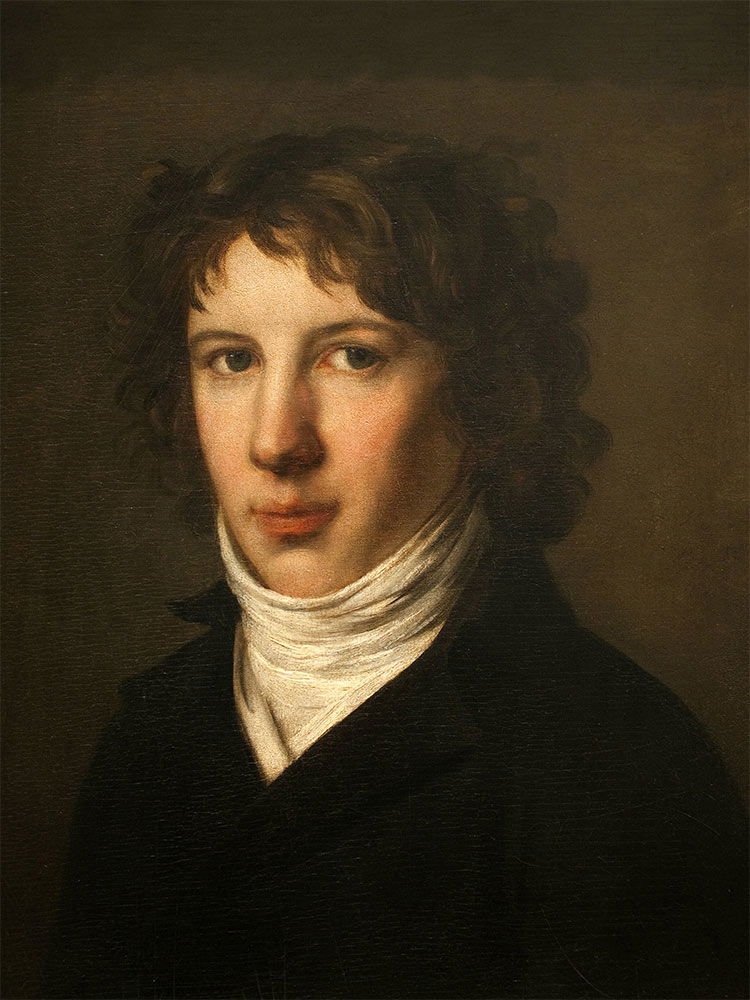 Can we get past this controversy to find out how far the myth had a basis in reality? One way is to look at his early life, before the world of revolutionary politics claimed him. He was born on August 25th, 1767 in Decize, in Burgundy, the son of a retired cavalry officer and a notary’s daughter. When Saint-Just was nine his family moved to Blérancourt, a small town in his father’s native Picardy. The following year his father died, leaving the mother to bring up her children alone. As a teenager, Saint-Just fell in love with a local girl, Thérèse Gellé. They hoped to marry but her father wanted a wealthier son-in-law. While Saint-Just was away, she was married off in a wedding attended by all the worthies of Blérancourt. When Saint-Just discovered this he was furious, not least with his mother, who had kept the news from him. Several weeks later, in September 1786, he absconded from his home, taking with him some of the family’s silver, which he sold in a Paris café. At his mother’s insistence the adolescent was tracked down, interrogated by the police and imprisoned in a house of detention, where he spent six miserable months to reflect upon his misdeeds. He must have felt deeply humiliated by this experience: he never spoke about it and few people ever knew. It may have influenced him in other ways, too, for in later writings he attacked the oppression of women and children in patriarchal families and defended women’s freedom to choose whom they loved.
Can we get past this controversy to find out how far the myth had a basis in reality? One way is to look at his early life, before the world of revolutionary politics claimed him. He was born on August 25th, 1767 in Decize, in Burgundy, the son of a retired cavalry officer and a notary’s daughter. When Saint-Just was nine his family moved to Blérancourt, a small town in his father’s native Picardy. The following year his father died, leaving the mother to bring up her children alone. As a teenager, Saint-Just fell in love with a local girl, Thérèse Gellé. They hoped to marry but her father wanted a wealthier son-in-law. While Saint-Just was away, she was married off in a wedding attended by all the worthies of Blérancourt. When Saint-Just discovered this he was furious, not least with his mother, who had kept the news from him. Several weeks later, in September 1786, he absconded from his home, taking with him some of the family’s silver, which he sold in a Paris café. At his mother’s insistence the adolescent was tracked down, interrogated by the police and imprisoned in a house of detention, where he spent six miserable months to reflect upon his misdeeds. He must have felt deeply humiliated by this experience: he never spoke about it and few people ever knew. It may have influenced him in other ways, too, for in later writings he attacked the oppression of women and children in patriarchal families and defended women’s freedom to choose whom they loved.
The frustrations of his imprisonment inspired Saint-Just to write Organt, an epic poem that recounted the misadventures of Antoine Organt, the 20-year-old illegitimate son of a bishop. Written in the satirical style inspired by Voltaire, it was the work of a young man, eager to make his mark in the world; full of impudence, fantastical imaginings and some pornographic passages that shocked several of his biographers, who were perhaps expecting something more spiritual from the future ‘archangel’ of the Jacobins. In a spirit of mischief Saint-Just dedicated his book to the Vatican. Yet when he surveyed his achievement he was dissatisfied with it and with himself. He added a one-line preface: ‘I am twenty; I have done badly; I could do better.’
Organt was published in 1789, the year the Revolution came: the year that transformed his life. From that moment on he gave himself body and soul to the Revolution. He had a lot to offer and he knew it: he was talented, forceful and fiercely clever, but he was a social nobody, without powerful connections, much wealth or a regular profession. He was also handicapped by his own youth: he was under 25, the age when he could legally participate in politics.
In June 1791 Saint-Just published a treatise, The Spirit of the Revolution, which stressed the importance of peace and stability. The constitutional monarchy was the best form of government; France was not suited to be a republic. While the politics were relatively moderate, some strikingly radical passages dealt with individual relationships and personal freedom. He also stated his absolute opposition to the death penalty. But the political stability he praised was about to be shattered. News broke that Louis XVI had attempted to flee France. Many revolutionaries saw the king’s action as a betrayal of his people: they would never trust him again. Later that year Saint-Just managed to secure nomination to the new national representation, but his moment of triumph was short-lived; he was immediately denounced by the father of the girl he had once wanted to marry, who disclosed that Saint-Just was under the legal age. He was obliged to vegetate in Blérancourt for another year, restless, bored and frustrated.
*
Within ten months the political situation spiralled into renewed crisis. The war with Austria and Prussia, brought about by the group known as the Girondins, was proceeding disastrously, with the French fighting a defensive war within their borders. Many revolutionaries blamed Louis and Marie-Antoinette, claiming that they were secretly in league with the foreign powers. On August 10th, 1792 the monarchy fell. This second revolution gave Saint-Just his chance. A few days past his 25th birthday he became the youngest of the 749 deputies elected to the National Convention, the new representative assembly. The Convention’s first act was to declare France a republic.
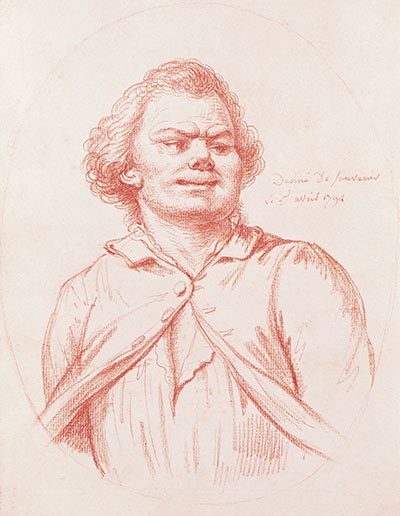
Saint-Just gravitated towards the most radical revolutionaries, the Jacobins, a group that included Georges Danton, Camille Desmoulins and Maximilien Robespierre. Back in 1790 Saint-Just had written to Robespierre, declaring: ‘You whom I know only, as I know God, by his miracles.’ Robespierre was flattered, as Saint-Just had intended, but there is no reason to think that Saint-Just was being insincere. The two men became close friends as well as like-minded colleagues and, until the last weeks of their lives, Saint-Just’s loyalty to the Incorruptible did not waver.
Saint-Just made his maiden speech to the Convention on November 13th. It was on the fate of the king and whether he should be tried for crimes against his people. Making oneself heard by an audience of well over a thousand people (the deputies plus the many spectators in the public galleries) and convincing them that you had something original and important to say was not easy. Yet Saint-Just succeeded with that first speech in establishing himself as one of the most effective revolutionary orators. While others tried to demonstrate that the king had acted wrongly, Saint-Just argued that kingship itself was morally wrong. ‘No one can reign innocently’, he said. The king was not a citizen and not subject to the law. If he lived, he would continue to be a danger to the republic. Therefore he should be put to death, without going through the legal formalities of a trial. The deputies were struck by the uncompromising logic of this argument; yet for most it was unthinkable that the king should simply be put to death. So Louis got his trial, though it ended, as Saint-Just had predicted, in a death sentence.
*
Saint-Just was never comfortable with the improvised interventions and frequent exchange of insults that often characterised debate in the Jacobin Club and occasionally the Convention. His forte was the set-piece speech, with its polished rhetoric, striking aphorisms and dramatic staging. Whenever he spoke in the Convention spectators pushed their way to the front of the galleries to hear him and said to their neighbours in expectant tones: ‘There he is!’
What kind of man did they see? Not the androgynous beauty of legend; that ‘angelic’ face was the invention of Michelet. Yet Saint-Just was undeniably good-looking. Portraits painted in his lifetime show him with a pale oval face, abundant chestnut hair, light eyes, high cheekbones and a decidedly long nose. The Jacobin leaders worked long hours and were often under considerable strain; over time, the effects of this exhausting lifestyle began to show in his face. Like Robespierre, Saint-Just was financially incorruptible and he managed on his modest pay as a deputy; yet he always dressed with care. Unlike many Jacobins, he did not adopt the rough clothes of the sans-culottes, the Parisian militants. He often wore a high cravat, conscious that this gave him dignity. His fellow Jacobin, Camille Desmoulins, mocked Saint-Just for his haughty appearance and especially for that cravat: ‘One sees in his bearing and his attitude that he considers his head the cornerstone of the republic.’ Despite Saint-Just’s egalitarian politics, his enemies (of whom he would acquire a fair number, including Desmoulins) said of him that he had the pride and hauteur of an aristocrat.
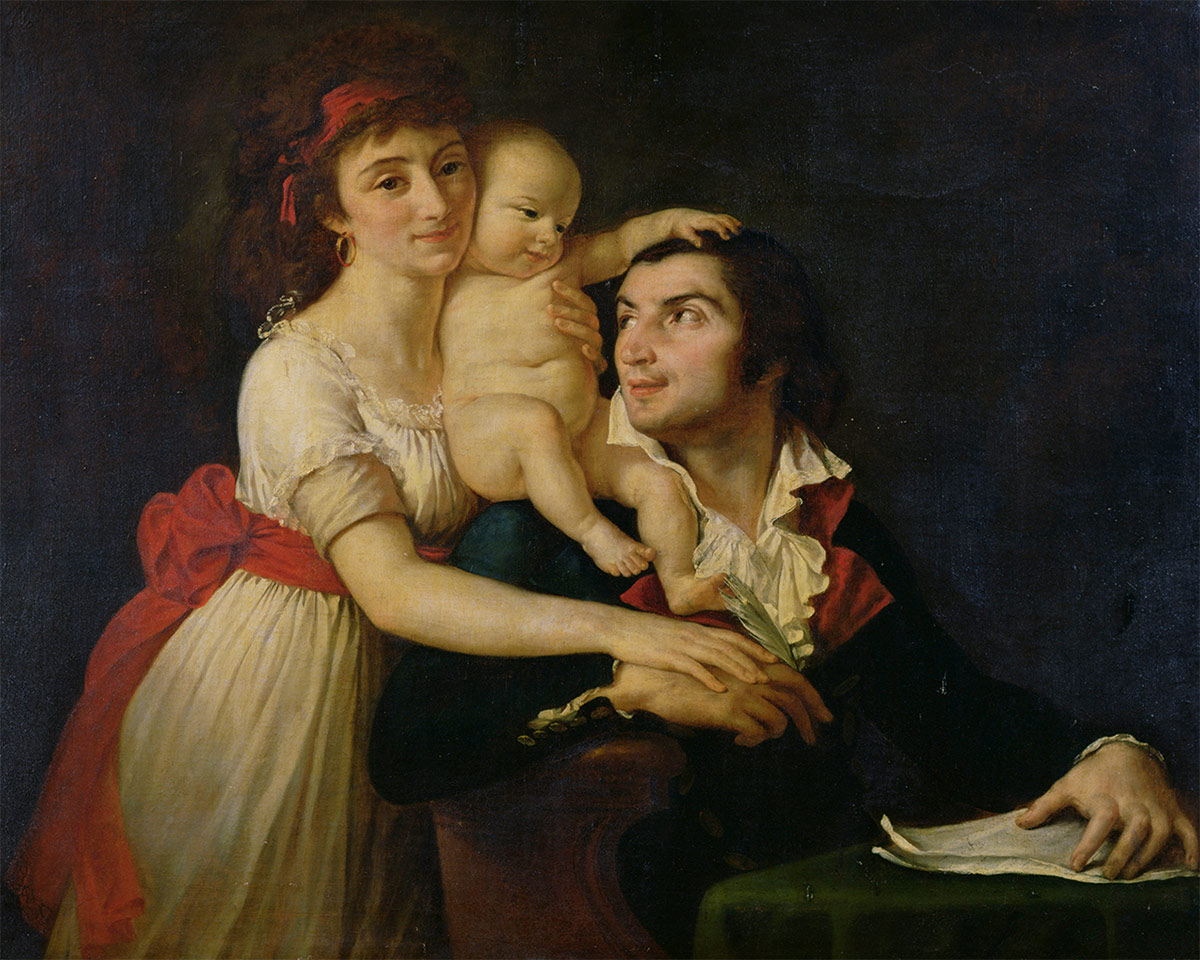
In June 1793 the Jacobins overthrew the Girondins and seized power. That same month Saint-Just helped draft a new ‘Jacobin’ constitution. It was the most liberal and egalitarian document of the entire Revolution, but it was shelved following a speech made by Saint-Just himself, arguing that the constitution could not be put in place while France was still at war and under threat. On July 10th, 1793 he was elected to the Committee of Public Safety. Made up of 12 members, it held extensive executive powers and took over the coordination of the war effort, becoming, in effect, a war cabinet, while the Committee of General Security was given responsibility for police, arrests and the prisons. Throughout the following year these two committees dominated the revolutionary government.
The summer and autumn brought escalating crises. Britain, Spain and Holland had joined the war against France. Many regions experienced revolts against Paris; while a full-scale civil war raged in western France. A series of betrayals, including that of France’s leading general, Dumouriez, hardened the revolutionaries’ attitude. At the same time the sans-culottes staged demonstrations to intimidate the deputies into passing more extreme measures. It was against this backdrop that the revolutionaries embarked on a policy that legalised the use of terror. Saint-Just played his part in this policy, but the Committee of Public Safety took collective decisions and shared responsibilities. The so-called ‘Jacobin Terror’ was not attributable to any one man, or even a group of men. It was in fact a series of laws, voted for by the deputies of the Convention. So why did Saint-Just become so personally identified with the Terror? Partly because he was prepared to speak publicly to justify it: along with fellow Committee members, Robespierre, Barère and Billaud-Varenne, he was one of the Committee’s principal spokesmen. Above all, it was to Saint-Just that both committees entrusted the task of drafting and delivering several speeches used to destroy a series of revolutionary factions. This factional in-fighting was part of the ‘politicians’ terror’. According to revolutionary ideology anyone who was not totally committed to the public good might be a conspirator, bought by the royalists. The power of terror that the revolutionary leaders wielded, threatened them, too. Driven by fear, mutual suspicion and revolutionary fervour, leading revolutionaries turned on one another, in a ruthless kill-or-be-killed scenario.
Saint-Just spent long periods away from the Committee, serving as a deputy on mission, during which time he took no part in the Committee’s decisions. During much of September to December 1793 he was in Alsace with the Army of the Rhine. Here his task was to ensure that the army was well supplied, keep a watchful eye on the generals and curb any civil unrest against the Revolution. Like other deputies, he acted with a colleague; in this case Philippe Le Bas, who seems to have been chosen for his conciliatory skills in the hope that he would moderate Saint-Just’s autocratic manner. They made an effective team. Despite the fraught circumstances in this frontier region, where many of the locals did not speak French and much of the territory was occupied by Austrian armies, Saint-Just and Le Bas used their powers with restraint. There were no wholesale killings such as happened elsewhere, where deputies were less scrupulous. There were relatively few arrests and most of these were concerned with army discipline and were dealt with by military courts. While Saint-Just was protective of the well-being of ordinary soldiers, some senior officers were arrested for incompetence, corruption or suspect loyalties.
*
The business of supplying an army was a way for private contractors to amass immense wealth through exclusive contracts, corruption and backhanders to state officials. Saint-Just would have none of that. ‘Ten thousand men are barefoot in the army’, ran one of his decrees to the municipality of Strasbourg. ‘You must take the shoes of all the aristocrats of Strasbourg, and by tomorrow at ten in the morning ten thousand pairs of shoes must be on their way to headquarters.’ So effective was the implied threat that 17,000 pairs of shoes and 21,000 shirts were hastily donated. Saint-Just went further, demanding forced loans from the rich for the army and local poor. But there were limits to how much social equality the Jacobins could enforce. Their powers, their time and their resources were limited. Saint-Just’s greatest achievement in Alsace was the key role he played in supporting the army as it drove the Austrian invaders back across the Rhine. At critical moments in the battles, and despite their civilian status, Saint-Just and Le Bas fought alongside the soldiers. Baudot, a Jacobin deputy who was also in Alsace and clashed with Saint-Just, remembered his courage under fire: ‘I saw him with the armies and I never saw anything like it!’
More difficult than military battles, where the enemy was clearly visible, were the political battles taking place in Paris, where the enemies were fellow revolutionaries. Here, too, Saint-Just played his part. Over the winter of 1793-94 a political crisis was tearing the Jacobins apart. Two factions challenged the Committees’ authority. The Hébertists, led by self-proclaimed sans-culotte leader, Hébert, wanted to intensify the Terror; the Dantonists, led by Danton and Desmoulins, wanted to wind it down. The committees, fearing that the victory of either would bring down the revolutionary government, decided to eliminate both. Saint-Just broke this decision to the Convention. On March 13th, 1793 he delivered a speech against the Hébertists. They were arrested, sent before the Revolutionary Tribunal and executed. Their enemies, the Dantonists, rejoiced, thinking themselves secure, but 18 days later Saint-Just denounced them as conspirators. His speech was based on vague and unsubstantiated allegations, provided for him by Robespierre, who shrank from delivering the actual speech. Saint-Just fashioned the notes into a speech intended to kill and it did its job. As he put it: ‘Those who make revolutions by halves do but dig their own graves.’
While Saint-Just was very guarded about what he said publicly, the scattered papers that he left behind in his rooms when he left for the last time and the notebook taken from him when he was arrested reveal some of what he was really thinking. They suggest that he was more shaken than he would admit about his part in the deaths of his fellow Jacobins. He also referred several times to his own death, which he felt to be imminent and which he pictured as a kind of sacrifice, an atonement, perhaps, that would show that he had acted from pure motives, not for his own benefit: ‘I have attacked men whom no one dared attack … it is for the youngest to die and to prove his courage and his virtue.’ Like Robespierre, Saint-Just feared that ambitious and corrupt individuals would pervert the Revolution, using it as a means to secure personal power. He feared that he would die before the republic could be secured. He tried to imagine a time beyond the Terror, when the republic could be maintained by social institutions, rather than by coercion and violence. But he could not see a way to get there and many of his plans were visionary rather than practical projects. In the last weeks of his life he lost hope, unable to see a way out of the nightmare that the Revolution had become. ‘The Revolution is frozen’, he wrote in despair. ‘All its principles are grown weak. There remain only intriguers sporting the red cap of liberty.’
During the first half of 1794 Saint-Just went on several missions to the Army of the North, where he played a leading role preparing it for imminent conflict. On his final mission he held a mandate over the armies of the North and the East, ‘from the sea to the Rhine’. He was a driving force behind the decisive battle of Fleurus on June 26th, 1794, which finally forced the Austrians from northern France. Saint-Just’s achievements with the armies had increased his personal standing. Month by month he was becoming a more important political figure in his own right.
After Fleurus the French were no longer fighting a defensive war and the policy of terror was no longer necessary. But winding down the Terror would not be easy. The atmosphere in Paris was toxic and Robespierre seemed to be having some kind of breakdown. He had fallen out bitterly with several Jacobins whom he saw as extremists; some of them were members of the committees. Robespierre ceased to attend meetings. For the first time Saint-Just wavered in his loyalty to Robespierre. Along with Barère, Saint-Just tried to broker a compromise between Robespierre and his opponents on the committees, which immediately fell apart, with Robespierre accusing his enemies of seeking his destruction.

On 8 Thermidor (July 26th) Robespierre went to the Convention to denounce several Jacobins, yet refused to name them, thereby terrifying everybody and precipitating a fight to the death between himself and his opponents. Saint-Just had been charged by the committees with making a report to the Convention on the compromise. He must have heard Robespierre’s speech with a heavy heart. In the course of that night he took a fateful decision: to ditch his position as spokesman for the committees and give a personal speech in defence of Robespierre. While his speech criticised several members of the committees, it did not ask for their arrest but strove for reconciliation and he called for social institutions to be established that could maintain the republic and prevent power falling into the hands of any individual. It was an enormous risk to take. It did not come off. Moments after he started to speak he was interrupted by Jacobin deputies determined to bring Robespierre down. Since Saint-Just was clearly prepared to defend Robespierre, they turned on him, too. There was turmoil as the plotters denounced Robespierre and those who stood with him. Paul Barras, who was party to the plot, described Saint-Just at the tribune as a ‘motionless, impassive, unconquerable, coolly defying them all’.
The uproar climaxed with the arrest of Robespierre, Saint-Just and three other deputies (including Le Bas, who insisted on joining his friends), all accused of conspiracy against the republic. They were briefly set at liberty by jailers too frightened to receive them, before a final showdown ensued in the town hall that same night. Once news broke that the five had been outlawed, few sans-culottes were prepared to risk their lives for them. Forces of the Convention that broke into the town hall were unopposed. All around them terrified people tried to escape. Le Bas blew his brains out. They found Saint-Just ministering to Robespierre, who had been shot through the jaw. The next day, without trial, Robespierre and his followers were taken to the guillotine. By all accounts Saint-Just bore himself with quiet courage. He was not yet 27. His career as a revolutionary leader had lasted less than two years.
*
Thermidor marked the beginning of the end of the legalised terror, but there would be plenty of violence still to come, not least on Napoleon’s battlefields, where many thousands would die, far more than in the Jacobin Terror. What might have happened had Saint-Just turned his back on Robespierre and survived Thermidor? Michelet lamented Saint-Just’s untimely end: ‘France will never console herself for the loss of such a hope.’ For Michelet, Saint-Just was the one man who might have stood up to Napoleon and made ‘the sword bow to the law’. But that was not to happen. Instead Saint-Just, like Robespierre, would take the rap for the Terror, for it suited all parties to forget that the choice to use terror had been a collective one. While surviving revolutionaries dwindled into old men, remembering the glory days of 1793, Saint-Just would never grow old and cynical, or disillusioned with the revolutionary cause. As his life ended, the myth began. He remains the archetype of the young and idealistic revolutionary. Yet the revolution to which he devoted his life ended by devouring him, as it did so many of its own children.
Marisa Linton is Reader in History at Kingston University and the author of Choosing Terror: Virtue, Friendship and Authenticity in the French Revolution (OUP, 2013). This article was first published in the January 2015 issue of History Today.




